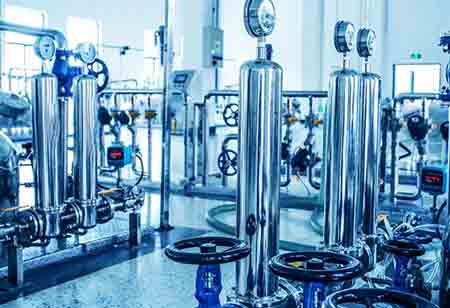Chemical Industry Review | Wednesday, September 18, 2024
Biocatalysis, a sustainable, efficient, and innovative enzyme-based process, is gaining interest in industries like pharmaceuticals, fine chemicals, food, and biofuels due to its low waste generation and energy conservation.
FREMONT, CA: Pursuing sustainable and efficient industrial processes has revitalized interest in biocatalysis, a transformative approach that harnesses the power of enzymes—nature's microscopic workhorses—to drive chemical transformations.
Industries are adopting a greener, more precise, and often more cost-effective path by substituting traditional chemical catalysts with these biological counterparts. Biocatalysts, predominantly enzymes, are proteins renowned for their specificity and efficiency. They facilitate various chemical reactions, from simple hydrolysis to complex stereoselective transformations. Their diverse applications include pharmaceuticals, fine chemicals, food and beverages, biofuels, and beyond. Enzymes, for instance, are utilized in producing antibiotics, chiral drugs, sweeteners, detergents, and bio-based materials, showcasing their remarkable versatility.
In contrast to traditional chemical catalysts, biocatalysts offer numerous advantages. Their high selectivity minimizes waste generation, reducing environmental impact and enhancing product purity. Furthermore, they operate under mild reaction conditions, often at ambient temperature and pressure, which conserves energy and reduces equipment costs. Enzymes are renewable resources derived from microorganisms, and their biodegradable nature renders them environmentally benign.
Environmental Benefits: Biocatalysts offer substantial environmental advantages by significantly reducing waste compared to traditional chemical processes, thereby minimizing overall environmental impact. Derived from microorganisms, enzymes are renewable and biodegradable, aligning with sustainability goals. Additionally, biocatalysis typically operates under milder conditions, such as lower temperatures and pressures, which results in reduced energy consumption and a smaller carbon footprint.
Economic Advantages: Despite the potentially high initial investment in enzyme development, biocatalysts often lead to lower long-term operational costs. This cost-effectiveness stems from decreased energy needs, reduced waste disposal requirements, and higher product yields. Biocatalysts also achieve higher reaction rates and conversions compared to traditional catalysts. Furthermore, biocatalysis reduces reliance on fossil fuels by utilizing renewable resources and operating under milder conditions.
Product Quality and Performance: In terms of product quality, biocatalysts excel in enhanced selectivity, resulting in purer products with fewer byproducts. They also enable the creating of products with specific desired properties, such as particular textures, flavors, or functionalities. Moreover, biocatalysis facilitates the synthesis of complex molecules that are difficult or impossible to produce using conventional chemical methods, thereby expanding the possibilities for innovation.
Recent advancements in biocatalysis have elevated the technology to new levels. Techniques such as directed evolution and protein engineering enable scientists to customize enzymes for specific industrial applications, improving their stability, activity, and selectivity. Additionally, integrating biocatalysis with other technologies, such as synthetic biology and process intensification, creates unprecedented opportunities.
For instance, the pharmaceutical industry is experiencing a paradigm shift with biocatalysts facilitating the efficient synthesis of complex chiral molecules essential for drug development. This progress is making the production of antibiotics, pain relievers, and other pharmaceuticals more sustainable and cost-effective. Biocatalysts create fragrances, flavors, and specialty chemicals with exceptional precision in the fine chemical sector.
The food and beverage industry also benefits from biocatalysis in numerous ways. Enzymes enhance the quality and shelf life of products such as bread, cheese, and juices. They also contribute to healthier alternatives by reducing fat, sugar, and salt content. Furthermore, biocatalysts play a pivotal role in the emerging bioeconomy by facilitating converting renewable resources into biofuels and bio-based materials.
Despite ongoing challenges such as enzyme stability, cost-effective production, and downstream processing, biocatalysis's potential is undeniable. As research and development progress, widespread adoption of this transformative technology is anticipated. By leveraging the capabilities of nature's catalysts, industries can achieve greater sustainability, efficiency, and innovation, paving the way for a greener and more prosperous future.

